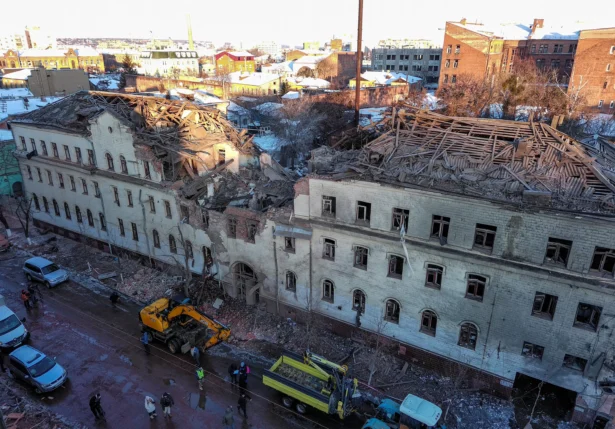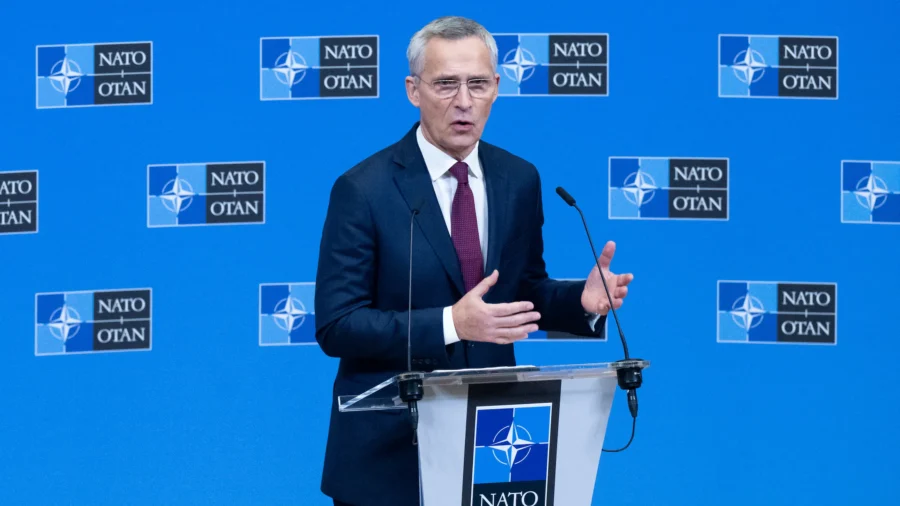NATO signed a contract for hundreds of thousands of artillery rounds for Ukraine, which faces a shortage of heavy ammunition in its fight with Russian forces.
The Western military alliance signed a $1.2 billion (1.1 billion euros) contract for the production of 155mm artillery ammunition.
The shells will be supplied by French arms maker Nexter and Germany’s Junghans, according to an industry source.
The NATO Support and Procurement Agency (NSPA) struck the deal on behalf of several allies who will either pass on the shells to Ukraine or use them to stock up their own depleted inventories.
Some of them will be supplied to Kyiv, while a portion will go to European countries, such as Belgium, Lithuania, and Spain.
“The war in Ukraine has become a battle of ammunition,” NATO Secretary-General Jens Stoltenberg told reporters after a signing ceremony at the military alliance’s headquarters in Brussels.
The contract is likely to yield about 220,000 rounds of artillery ammunition, with the first deliveries expected at the end of 2025.
‘Shell Hunger’
Ukrainian Defense Minister Rustem Umerov said last week that a shortage of ammunition, which he described as “shell hunger,” was a big problem for Kyiv’s troops nearly two years after Russia’s full-scale invasion.
Ukraine fired around 4,000 to 7,000 artillery shells each day last summer, while Russia was launching more than 20,000 shells daily in its neighbor’s territory, according to European Union estimates.

NATO Looks To Step Up Production
Since NATO began a program to address shortfalls in allies’ military stocks last July, the NSPA has agreed deals worth some $10 billion (9.19 billion euros), Mr. Stoltenberg said. This included artillery and tank shells and Patriot air defense missiles.
At a meeting in February, NATO defense ministers are set to discuss other ways to step up industrial production, which the NATO chief described as absolutely necessary to enable continued Western support for Kyiv.

But US Cannot Provide Ammunition
For the first time since the beginning of the Ukraine war, the United States cannot provide ammunition and missiles to Ukraine.
While waiting for Congress to pass a budget and potentially approve more money for Ukraine’s fight, the United States will be looking to allies to keep bridging the gap.
“I urge this group to dig deep to provide Ukraine with more lifesaving ground-based air defense systems and interceptors,” Defense Secretary Lloyd Austin said in opening remarks broadcast from his home, where he is still recuperating after prostate cancer surgery. The opening statement by video was his first public appearance. Mr. Austin, 70, was hospitalized for two weeks after complications from the surgery.
The United States has not been able to provide additional ammunition because the money for replenishing those stockpiles has run out, and Congress has yet to approve more funds.
“Even though we aren’t able to provide our security assistance right now, our partners are continuing to do that,” deputy Pentagon press secretary Sabrina Singh told reporters Monday.
Additional air defense systems and munitions remain a top need of Ukraine, Ms. Singh said.
Russian Missile Barrage
Russia on Tuesday launched a barrage of more than 40 ballistic, cruise, anti-aircraft, and guided missiles into Ukraine’s two biggest cities, damaging apartment buildings and killing at least five people. The assault came a day after Moscow shunned any deal backed by Kyiv and its Western allies to end the almost two-year war.
Ukraine’s air defenses were able to intercept at least 21 of the missiles. However, the attacks injured at least 20 people in four districts of Kyiv, the capital.

Aid Stalled
The Pentagon announced its last security assistance for Ukraine on Dec. 27, a $250 million package that included 155 mm rounds, Stinger anti-aircraft missiles, and other high-demand items drawn from existing U.S. stockpiles.
More than $110 billion in aid for both Ukraine and Israel is stalled over disagreements between Congress and the White House over other policy priorities, including additional security for the U.S.-Mexico border.
The U.S. and approximately 30 international partners are also continuing to train Ukrainian forces and, to date, have trained 118,000 Ukrainians at locations around the world, said Col. Marty O’Donnell, spokesman for U.S. Army Europe and Africa.
The United States has trained approximately 18,000 fighters, including approximately 16,300 soldiers in Germany. About 1,500 additional fighters are currently going through training.
Reuters and The Associated Press contributed to this report.


